By the Downpatrick Branch of the Young Archaeologists’ Club





 This booklet is part-financed by the European Union’s European Regional Development Fund through the EU Programme for Peace & Reconciliation (PEACE III) managed by the Special EU Programmes Body and delivered by the North Down, Ards and Down Council cluster.
This booklet is part-financed by the European Union’s European Regional Development Fund through the EU Programme for Peace & Reconciliation (PEACE III) managed by the Special EU Programmes Body and delivered by the North Down, Ards and Down Council cluster.
Megaliths and Places we visited

Passage Tombs
Giant’s Ring, Co. Down page 6-7
Annadorn, Co. Down page 7
Knockmany, Co. Tyrone page 8
Knowth, Co. Meath page 9
Newgrange, Co. Meath page 10-11
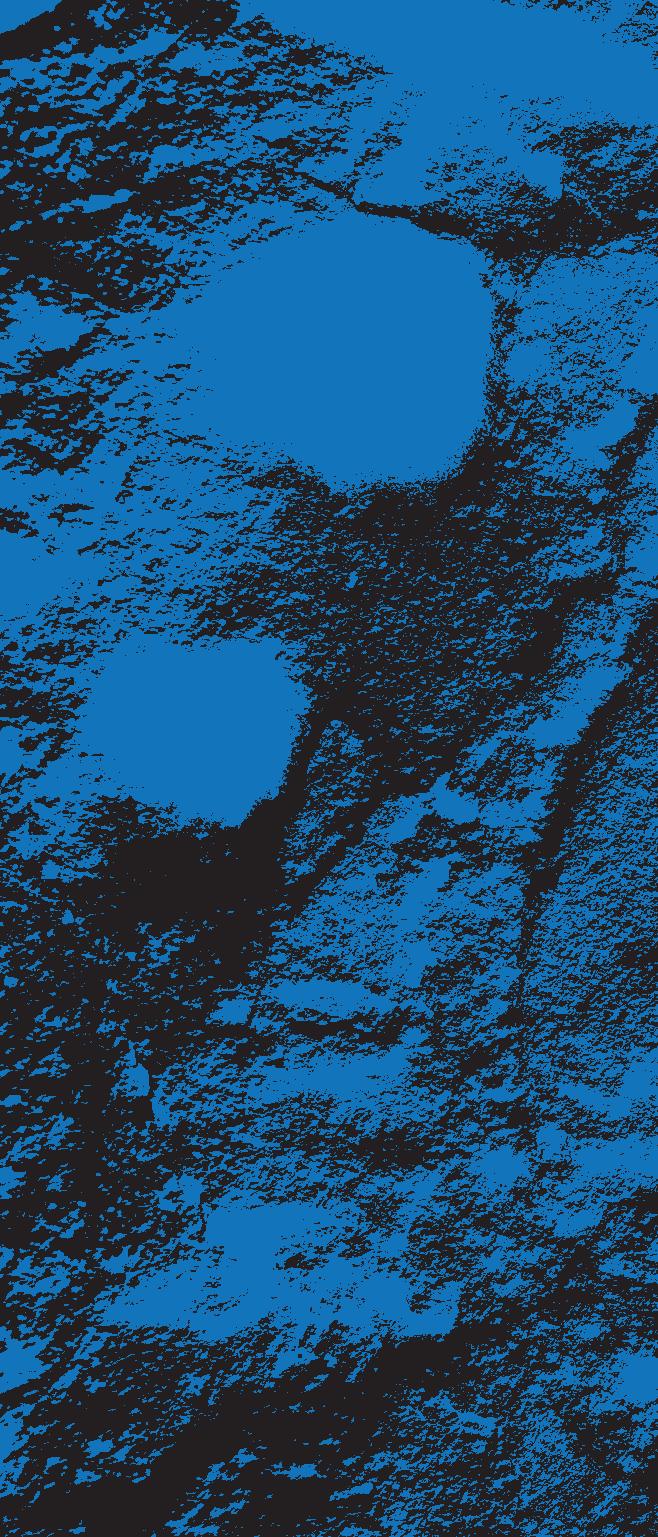
Portal Tombs
Tirnony, Co. Londonderry page 4-5
Legananny, Co. Down page 12
Goward, Co. Down page 13
Kempe Stones, Co. Down page 13
Court Tombs
Audleystown, Co. Down page 14
Tamnyrankin, Co. Londonderry page 15
Knockoneill, Co. Londonderry page 15
Stone Circles
Ballynoe, Co. Down page 16
Beaghmore, Co. Tyrone page 17
Standing Stone
Strangford Stone, Delamont Park, Co. Down page 20
Other Places
Ballynoe Fieldwalking page 2
Walshestown Castle page 18
Downhill excavation page 19
Castle Espie Round House page 20
Binder’s Cove Souterrain page 20
We are the Downpatrick branch of the Young Archaeologists, Club (YAC) and we meet at Down County Museum once a month to find out about archaeology. We are all aged between 8 and 16 and some of us have been with the Club for more than 5 years. The Club has been going 9 years and there are over 20 of us at the moment. We like going on special trips to archaeological sites, hunting for artefacts on fieldwalks and digging with archaeologists, and this year also finding out a lot about geology. We had a great time visiting sites made of giant stones in 2010, some that were over 5000 years old, and we even got to go inside Newgrange. But we like our own stone circle at Ballynoe best! We could only do this project because of money from the European PEACE III Programme and we really want to thank everyone who made this possible. Mainly it was people from Down County Museum in Downpatrick and the Somme Heritage Centre near Newtownards who helped us. We also joined up with the Little Diggers who meet at North Down Museum in Bangor, and we went to see a replica prehistoric roundhouse at Castle Espie with them. We also wanted to make links with children interested in archaeology from Poland, and with families from Poland who live nearby, and so we decided to get our booklet translated into Polish!
Our special project was on MEGALITHS – ancient Greek for ‘Big Stone’ monuments. They date from the Neolithic, when farming first came to Ireland, to the Bronze Age, between about 4000BC and 2500BC. We went by minibus mainly around Co. Down but also enjoyed going to Co. Londonderry, Co. Tyrone and Co. Meath. Megaliths are places where people were buried, we don’t know much about who the people were, except that we did find some of their belongings on a dig! As well as seeing tombs - passage tombs, court tombs and portal tombs - we also visited some stone circles and some other places. We made up this booklet using our photos and drawings and helped make an exhibition on Megaliths. We hope that people will have fun reading it and maybe some more young archaeologists will join our club and make friends like we have. And lots of people will go and visit megaliths and find out more about them!
To find out about joining YAC UK visit www.yac-uk.org
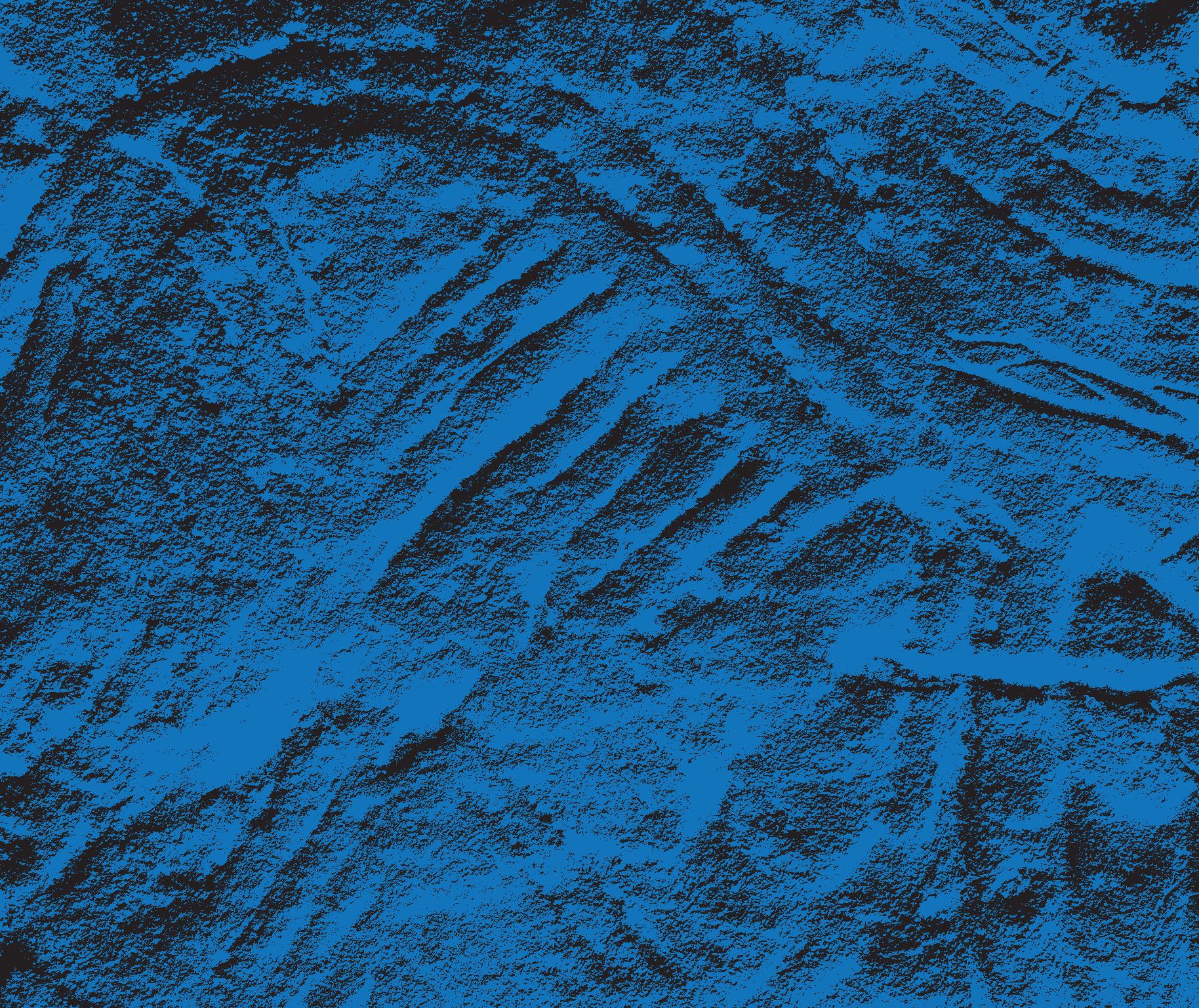


1
DiSCOVERING OUR PAST

Ballynoe Fieldwalking
We were lucky when a local farmer allowed us to walk over his newly ploughed field near Ballynoe Stone Circle outside Downpatrick and we looked for any artefacts that the plough might have turned up. We were shown flint objects from Down County Museum so we knew what to look for and walked in straight lines in big 20m squares.


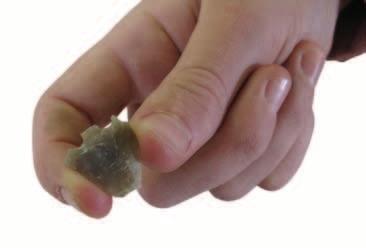

And we found lots of artefacts!! We found a lot of broken cups and plates from the 19th century ...gunflints used to fire old muskets over 300 years ago ...and ...a 4500 year old Bronze Age barbed and tanged arrowhead!

2
sorting our finds and identifying stones
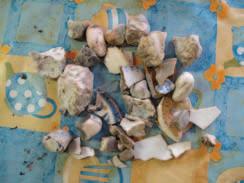




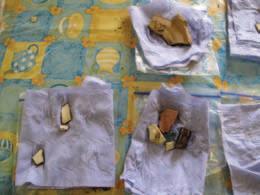
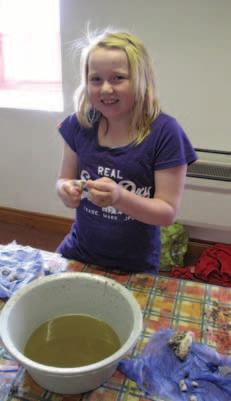
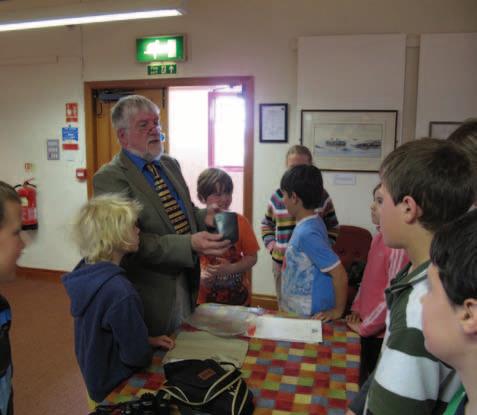
Here we are cleaning, sorting, identifying, bagging and cataloguing all the finds from Ballynoe fieldwalk.
We learnt from Ian, a geologist, about what stones people in the past used to make things with and build their monuments out of. We looked at a very important stone called porcellanite, which comes from only two places in Co. Antrim and found out that hundreds of prehistoric axes found in Ireland and Britain were made from this stone.
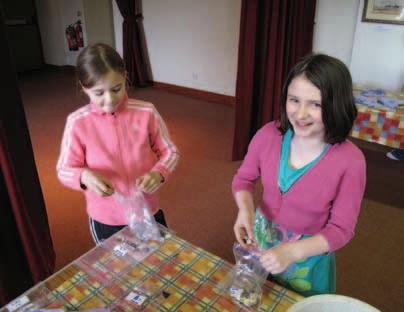
3
Digging at Tirnony Portal Tomb


The megalithic tomb at Tirnony in Co. Londonderry was in danger of collapsing because the roots of a tree were pushing it over.

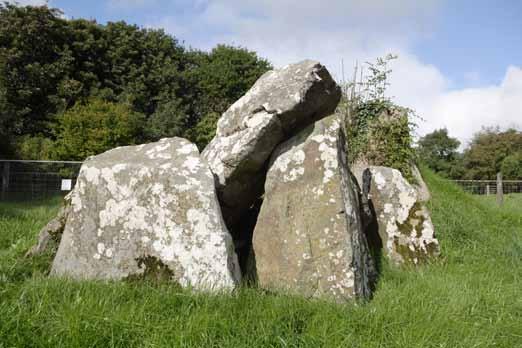
Archaeologists had to excavate it to stop it getting too damaged and they kindly let us help.
Helping with the digging and sieving of the soil.

4
The archaeologists found some interesting artefacts including a lovely Neolithic flint knife and a rare blue glass bead. The bead shows the megalith was used again much later.
We found Neolithic pottery, flint that was struck and a more recent broken clay pipe.
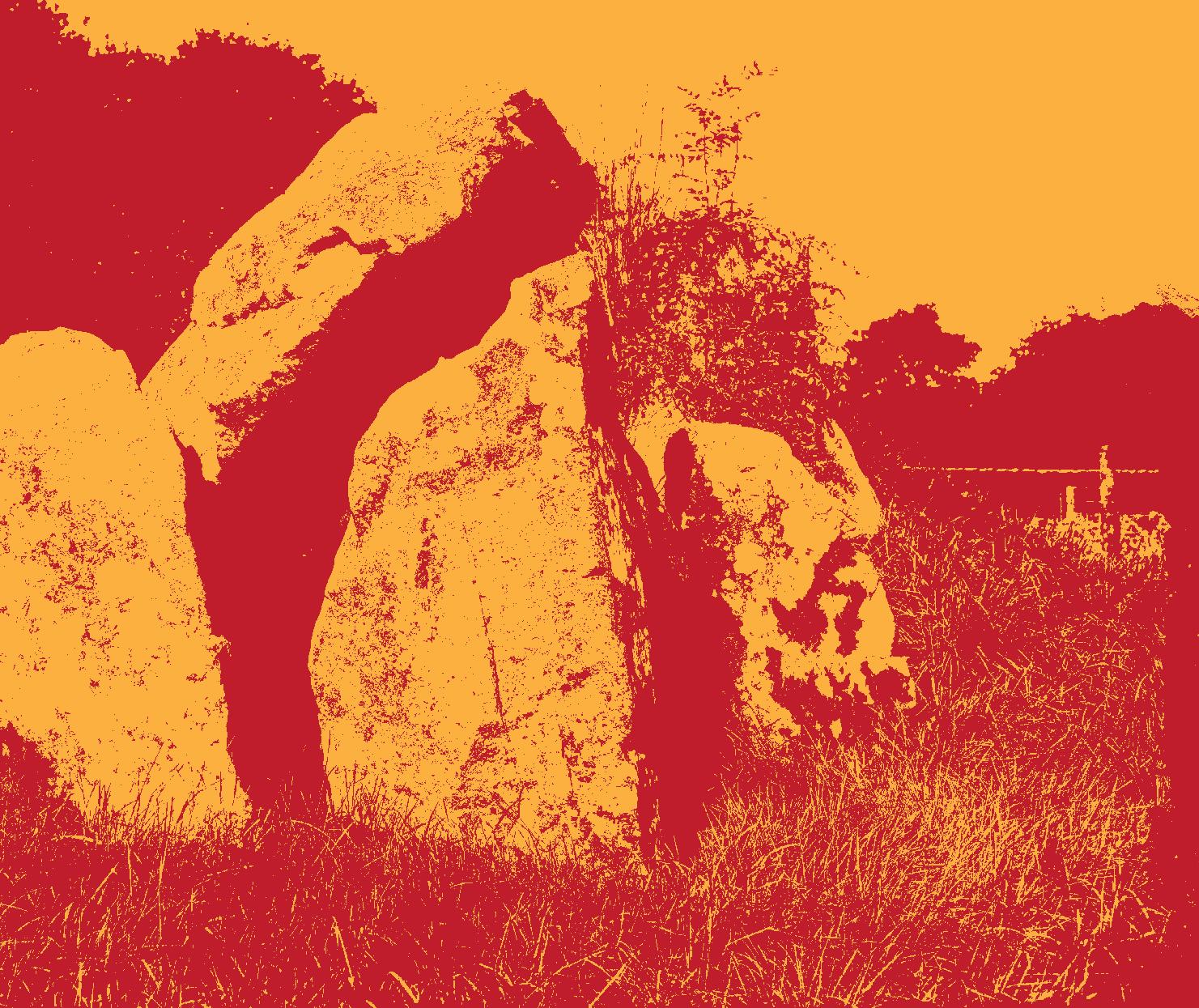
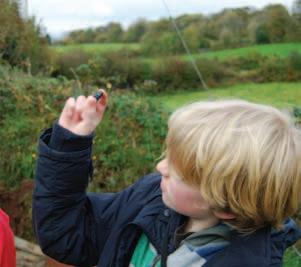
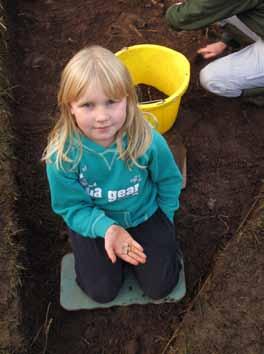
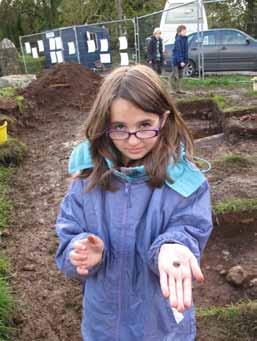
Stem of clay pipe for tobacco 1800s
Possible
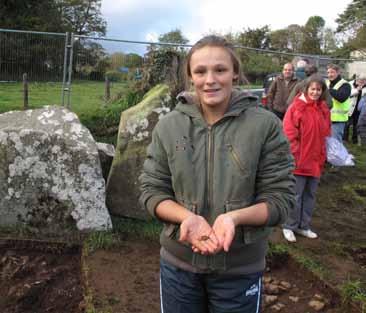



Iron age Blue beadglass Struck piece of flint from a Stone age tool
Piece of Neolithic pot

5
Passage Tombs
We went to visit a huge monument called the Giant’s Ring south of Belfast. Near the middle is a small simple passage tomb from the early Neolithic, that had burnt human bone in its chamber dating to around 3400BC. It is in a huge ring of earth called a henge which was built hundreds of years after the passage tomb was built. We measured this large ring and it was 190m across with a bank 4m high. It might have been used for ceremonies and lots of people could come together there. We didn’t meet any giants though!
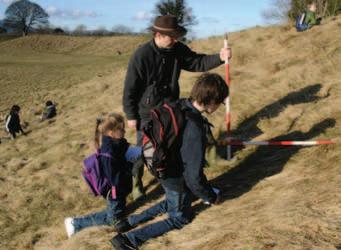
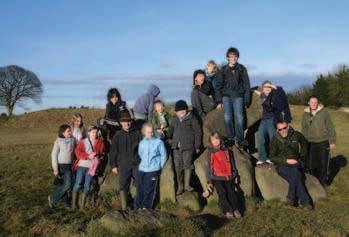

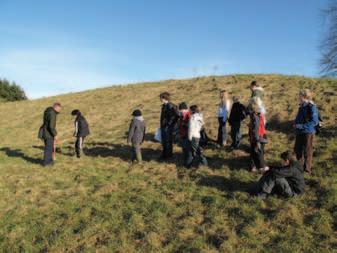
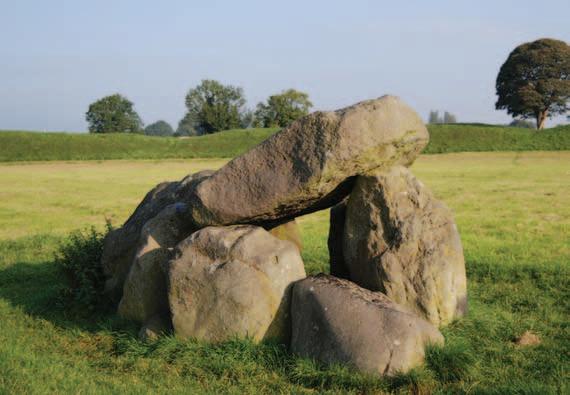
The Giant/s Ring 6
DID YOU KNOW?
Passage tombs are usually made up of a chamber reached by a passage. They are covered in a circular mound of stones called a cairn which is usually held in place around the edge by large stones called kerbstones.
The Giant’s Ring at Ballynahatty near Belfast, Co. Down is part of a complex of prehistoric sites.
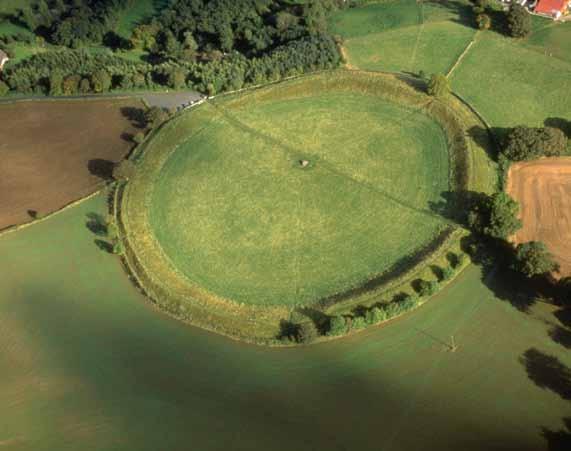
Archaeologists found Neolithic and Bronze Age burials in the field beside the enclosure and there were massive circular timber structures also, which means the place was an important centre throughout early prehistory. It might have been used to allow dead bodies to rot before they were put in tombs.
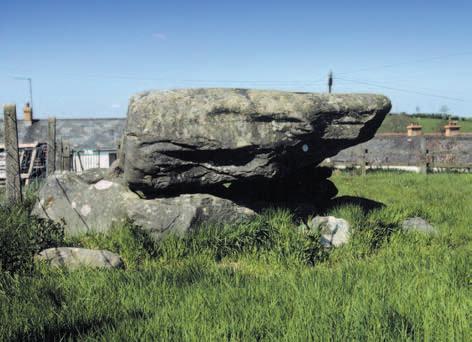
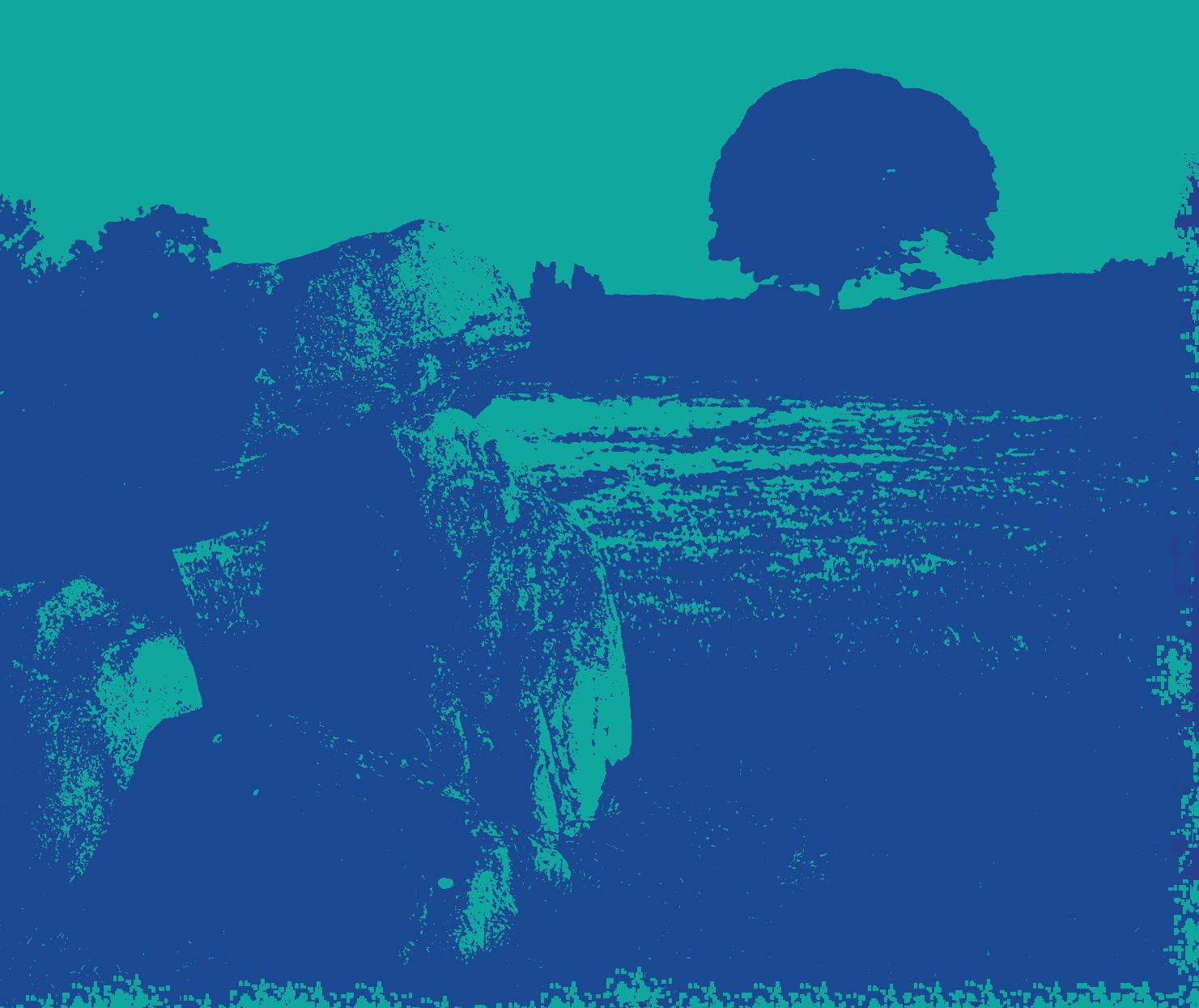
Annadorn near Loughinisland, Co. Down is another passage tomb.
This one might have been covered in stones to make a circular cairn but was damaged in the past.
7
Knockmany
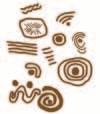



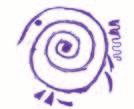
This is a passage tomb in Co. Tyrone. It is on top of a hill with great views. The best thing about Knockmany is all the passage tomb art inside, with nine decorated stones having concentric circles, zigzag lines and diamond shapes (along with modern graffiti!!). In mythology it was believed to be the burial place of Báin, wife of a legendary King Tuathal Techtmar, the founder of the ancient province of Meath, probably in the fourth century AD.




“
8
Maybe all the lines and squiggles are for someone‚s birthday or other special occasions in people‚s lives? What do you think?”
Knowth


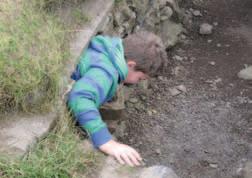
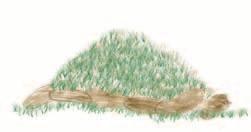
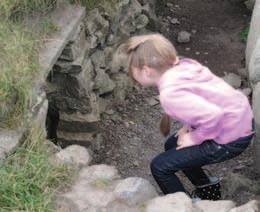

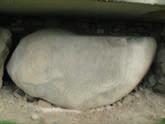
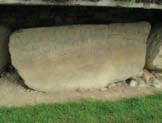
This is the world’s biggest passage tomb in the Boyne Valley in Co. Meath and is a part of a World Heritage Site. It is 85m across and 10m high. Knowth has 300 stones with passage tomb art inside and on the kerbstones outside. It was built around 3000 BC but was re-used over thousands of years.


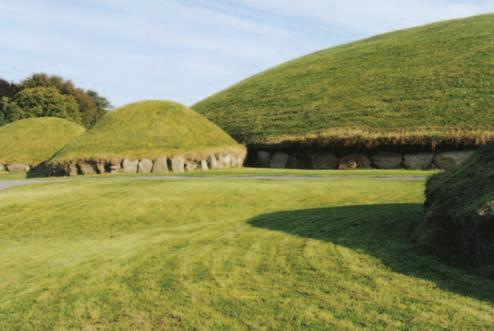

There are standing stones at the two entrances to the main mound, and quartz from Co. Wicklow and egg-shaped cobblestones of Co. Down granite were brought to decorate it.
Souterrains are stone-roofed underground tunnels used for storage and protection about a thousand years ago. We got to go inside one!
There are 17 small passage tombs around the main one.
9
Newgrange






This is the world’s most famous passage tomb in the Boyne Valley, Co. Meath dating to 3000BC. It is famous because during the winter solstice, on 21st December, the sun shines through a little box above the door, all the way down the 19m long passage and directly into the main chamber. There is a lot of megalithic art inside and on the kerbstones outside and there is a stone circle around the main passage tomb.
DID YOU KNOW?
The stone basins in the main chamber are made of granite from Co. Down.
10
We got to learn about ‘geoarchaeology’ which involves studying the stones used to make objects and monuments. Newgrange and Knowth are amazing because some of the stones come from many kilometres away, including the Mournes, Newry and Carlingford.
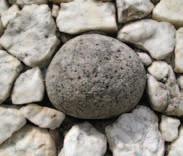
Quartz from the Wicklow Mountains 40km to the south Gabbro from beaches around Dundalk Bay or Carlingford Lough 40km to the north
Newry Granite from beaches around Dundalk Bay or Carlingford Lough 40km to the north
Mourne Granite from beaches around Dundalk Bay or Carlingford Lough 40km to the north

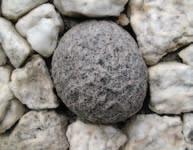



The quartz and granite on the front of Newgrange
DID YOU KNOW?
The Irish for quartz is ‘Grianchloch’ which means ‘Stone of the Sun’
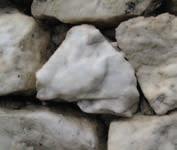
11
Portal Tombs
Legananny, Slieve Croob, Co. Down
Portal tombs are named after the tall stones that act as a ‘portal’ or doorway into the chamber which was covered by a very big capstone forming the roof. Unlike passage tombs, which are under circular piles of stone, these sometimes had a long rectangular mound of stones that covered the chamber, but probably never covered the capstone.
Legananny is derived from Irish: Liagán Áine meaning ‘Áine’s standing stone’ – Áine was an Irish goddess.

DID YOU KNOW?
Portal tombs are often called dolmens, which means a ‘stone table’ from Tolmén in the Breton language in France.
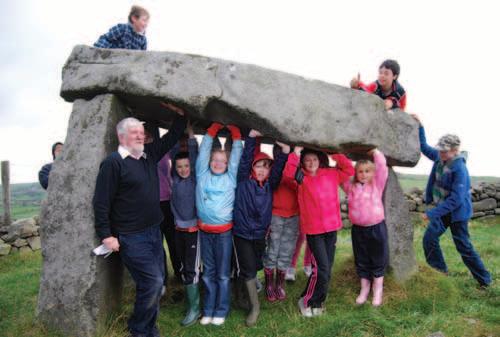
Some portal tombs are called the ‘Beds of Diarmuid and Gráinne’, where this legendary couple slept while being chased by the giant, Finn MacCool.
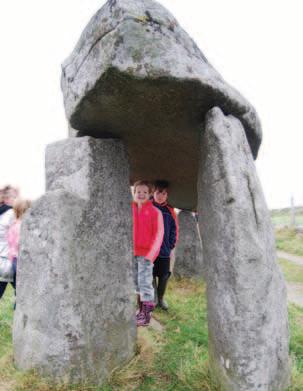
12
Kempe Stones
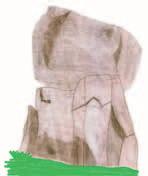
Greengraves, Newtownards, Co. Down
At the Kempe Stones there are two large portal stones, side stones and an end-stone that form a chamber roofed by two overlapping capstones. This portal tomb has a low blocking-stone closing the entrance. Human bones were found when it was dug in the 1830s.
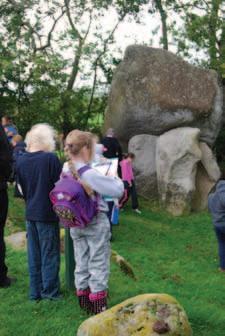

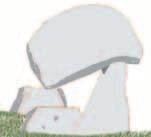
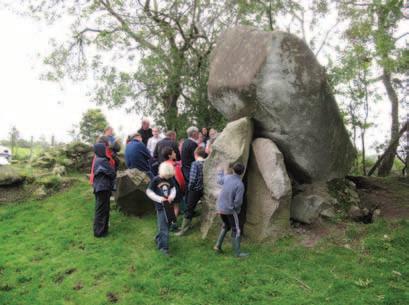
goward dolmen
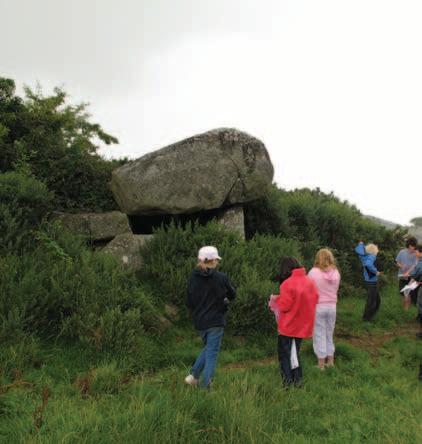
Goward, Hilltown, Co. Down Goward portal tomb has had a variety of names in the past, among them Finn’s Finger (after the legendary giant Finn MacCool,) probably because of the tall slender upright stone at the front of the chamber. To some it is known as Pat Kearney’s Big Stone, named after the man who lived in a cottage next to it, which is now in ruins.
DID YOU KNOW?
The granite capstone at Goward weighs over 50 tonnes! Archaeologists think that the long cairns at some portal tombs may be remnants of stone ramps used to slide the capstones up to the top of the monuments.
13
Court Tombs
Audleystown, Co. Down, is a dual or double-ended court tomb with courts and galleries back-to-back.
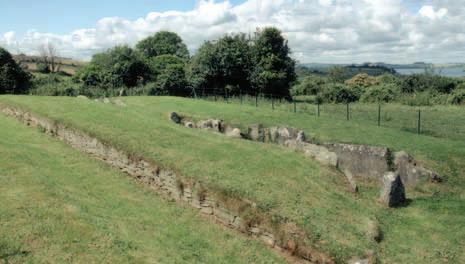
Court tombs have a special roofless U-shaped court area at the end, with a central entrance leading to the gallery and chambers inside. These chambers had low corbelled roofs, made of overlapping flat stones, and the whole tomb would have been covered by a cairn. The edges were marked by large kerbstones or dry-stone walling.
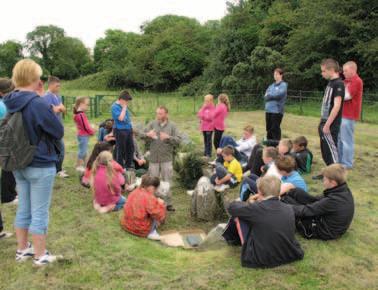
artefacts found at audleystown

DID YOU KNOW?
The bones of 34 people were found in excavations at Audleystown court tomb. In one chamber there were bones of 9 adults, and some of the long bones were laid out parallel to one another. On one side of these was a child’s jaw and on the other was the jaw of a pig.
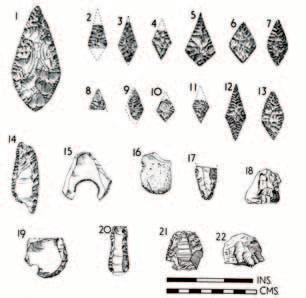
14
Tamnyrankin,
Co. Londonderry
The court area in front of the gallery might have been used for ceremonies before the human remains and artefacts, such as scrapers, arrowheads, javelin heads, pottery or axes, were put into the chambers with the bones.
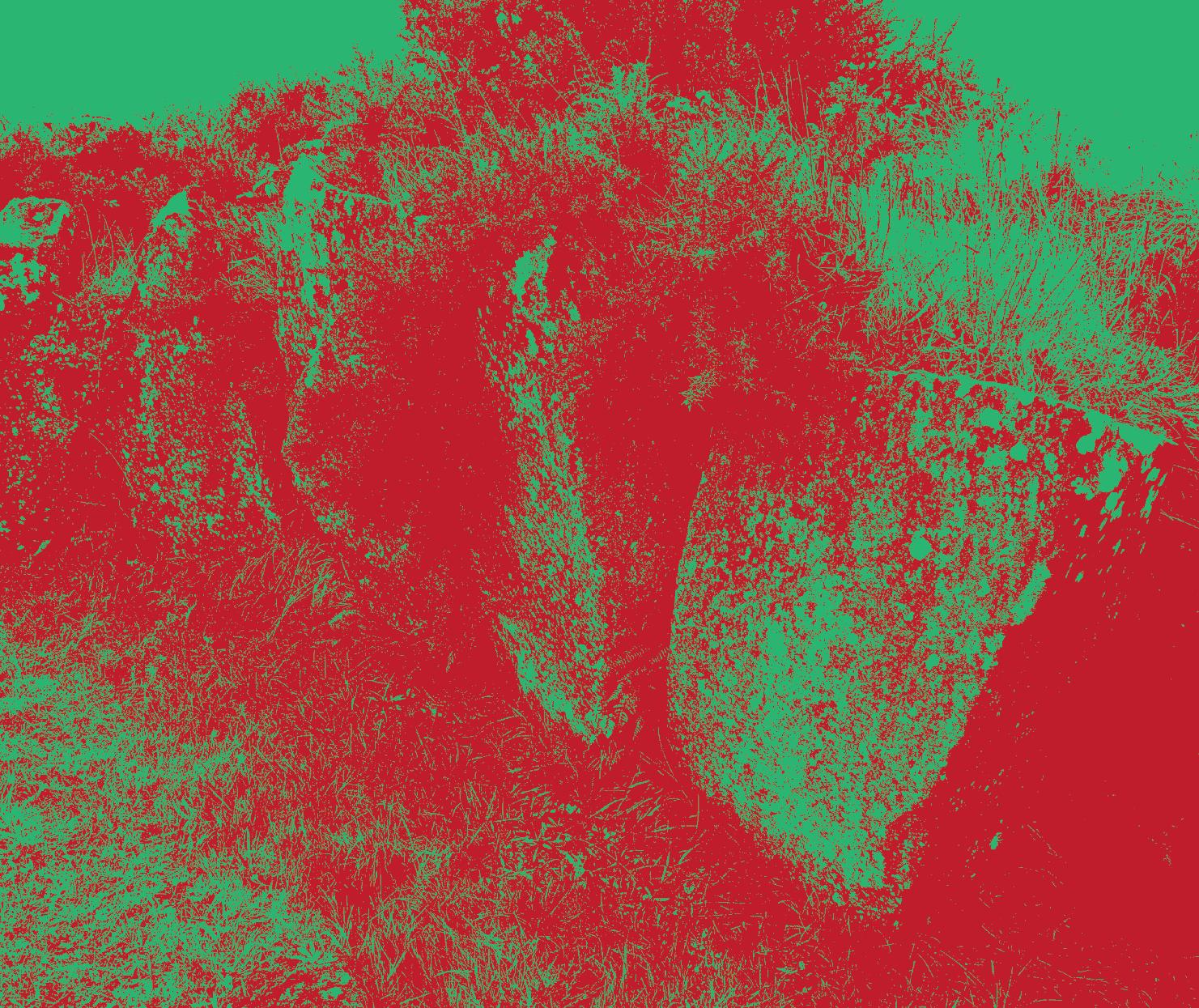
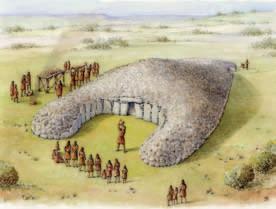
KNOCKONEILL,
Co. Londonderry
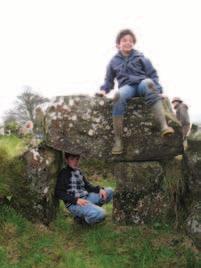

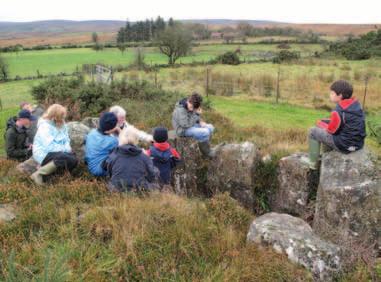
The rock type at Tamnyrankin is 60 millionyear-old basalt lava, which is local to the area. It is the same at Knockoneill, but here there are a few stones of quartz-rich schist, from the local rocks known as ‘the Dalradian’ - the oldest rocks seen on any of our trips, being over 500 million years older than the basalt lavas of the region!
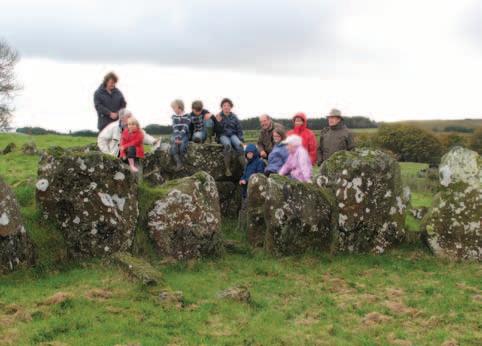
15
Stone Circles
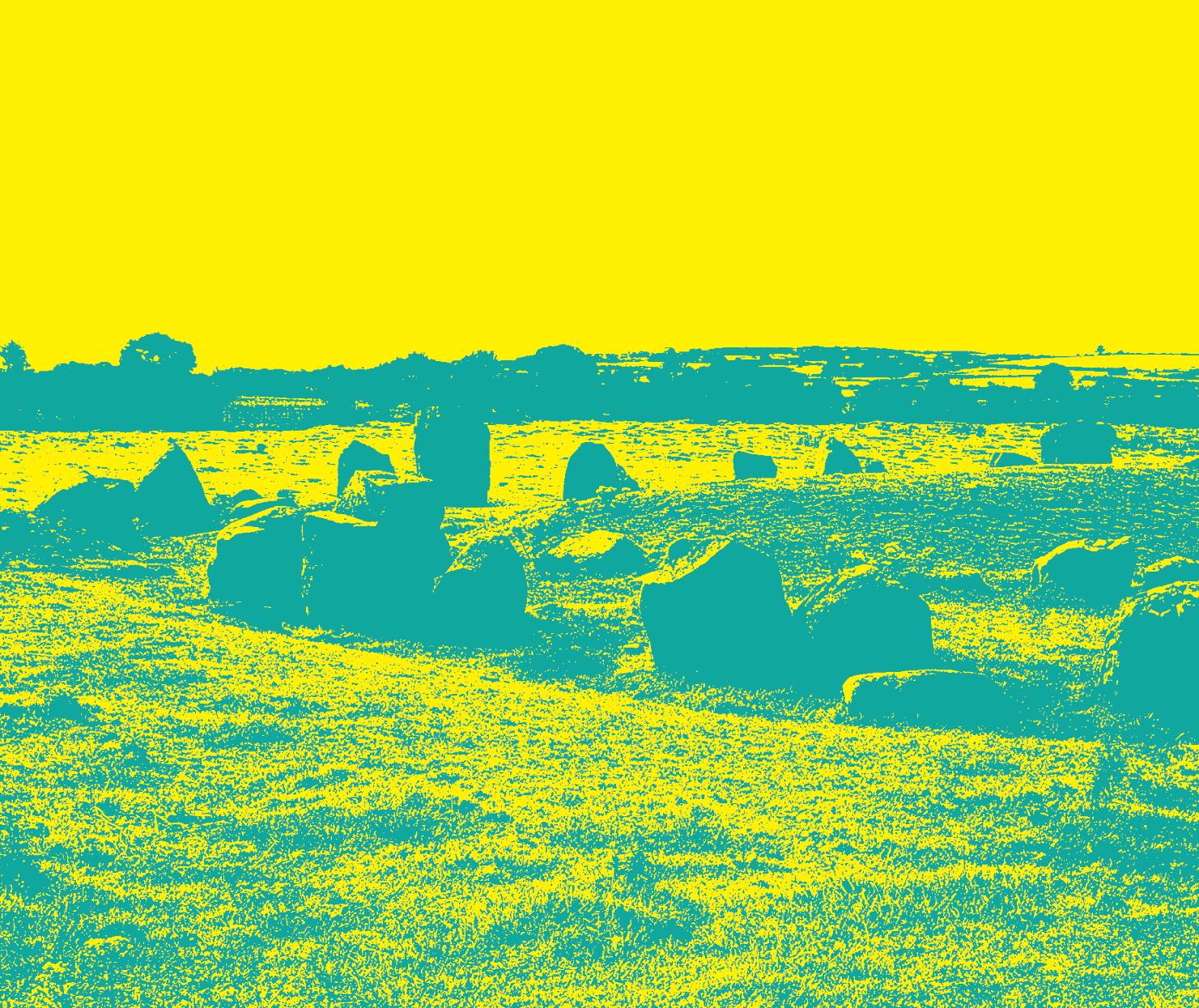 Ballynoe, Co. Down
Ballynoe, Co. Down
Stone circles are made up of upright stones forming open circles, which seem to have been used for ceremonies and burials from the Late Neolithic to the Bronze Age (2500-500BC). Some may have astronomical alignments to positions of the sun or moon at particular times of the year.
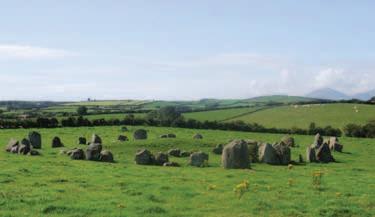
Ballynoe is almost identical to a stone circle at Swinside in the Lake District of Cumbria in England, 160km away across the Irish Sea. There must have been links between the people who built these two stone circles.

Like many megaliths, this stone circle seems to have been altered and changed through early prehistory - maybe four times. The Bronze Age earthen mound inside the circle contained burnt bones of a male adult at the east end in a cist or stone box. At the west end there was another burial comprising the burnt bones of two females.
The stones at Ballynoe are of different rock types, some from local bedrock and some transported by glaciers 12000 years ago. We looked at Greywacke, about 430 million years old, Newry granite about 415 million years old, and gabbro, about 60 million years old.

DID YOU KNOW?
There are 70 stones in the circle which is 30m wide.
16
Beaghmore, Co. Tyrone

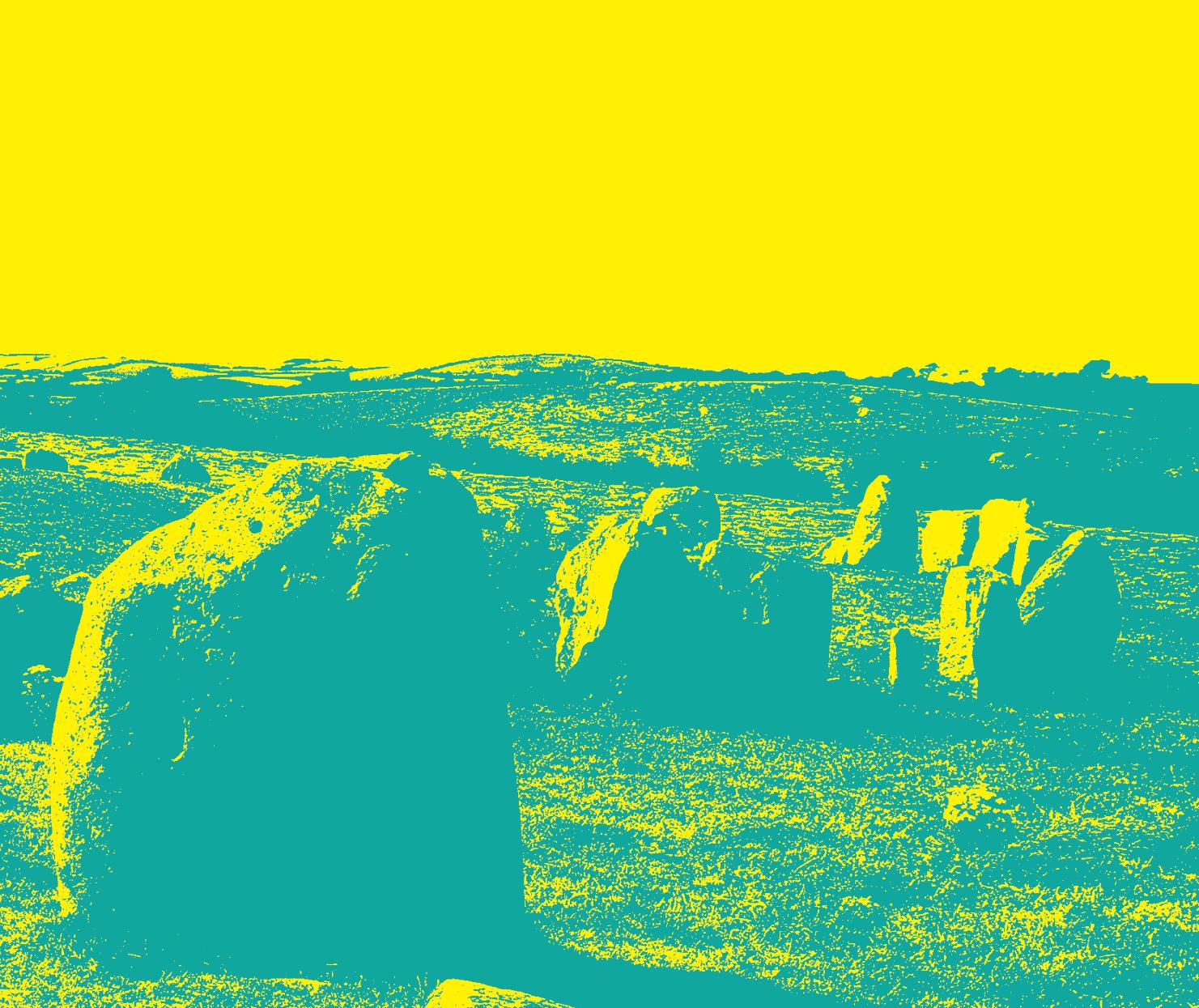
Archaeologists think there were different phases here dating from between 1500BC and 800BC. Four of the stone alignments might point towards the horizon where the sun rises on Midsummer’s Day – 21st June.
Igneous rocks make up the circles and rows here, dating from 480 to 465 million years ago, and most of the stones at Beaghmore were probably transported by glaciers during the Ice Age 12000 years ago. Igneous rocks are made of hot magmas from volcanic activity.
DID YOU KNOW?
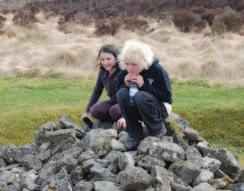
One of the seven circles is called the ‘Dragons Teeth’. We tried to count the stones, but there were more than 880!
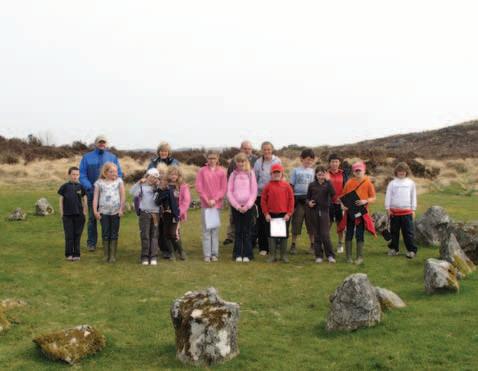

17
Our Summer Project

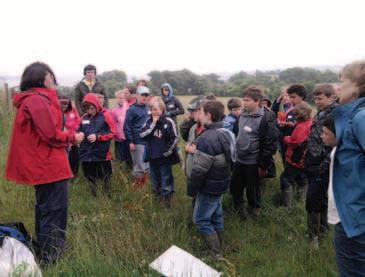
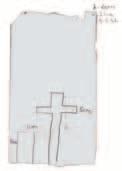
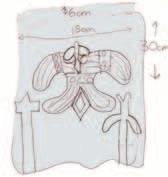
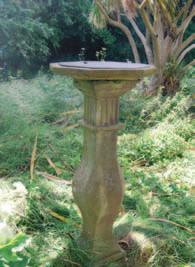
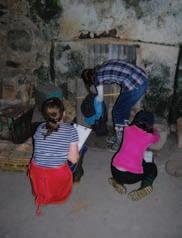
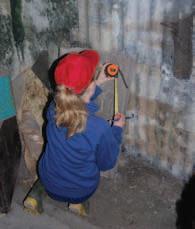
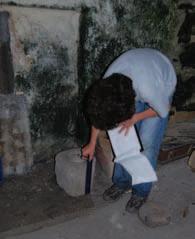
We went on a trip to Walshestown Castle at Myra, near Downpatrick, where there are lots of things to see. A ringfort from about the 8th century, a 15th-century castle with 13thcentury Norman grave slabs that are stored in it, and 19th century house, gardens, farm and gasworks. We recorded a lot of the things we saw. Michael had a big key to get into the castle!! The Norman grave slabs were made from sandstone quarried at Scrabo. The stones that were used to build the castle are mainly local greywacke, but some might have been imported into Northern Ireland from Scotland or England.
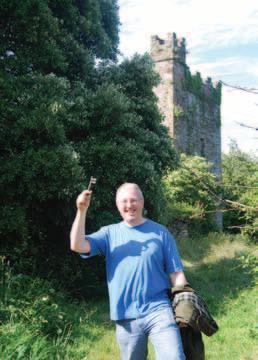
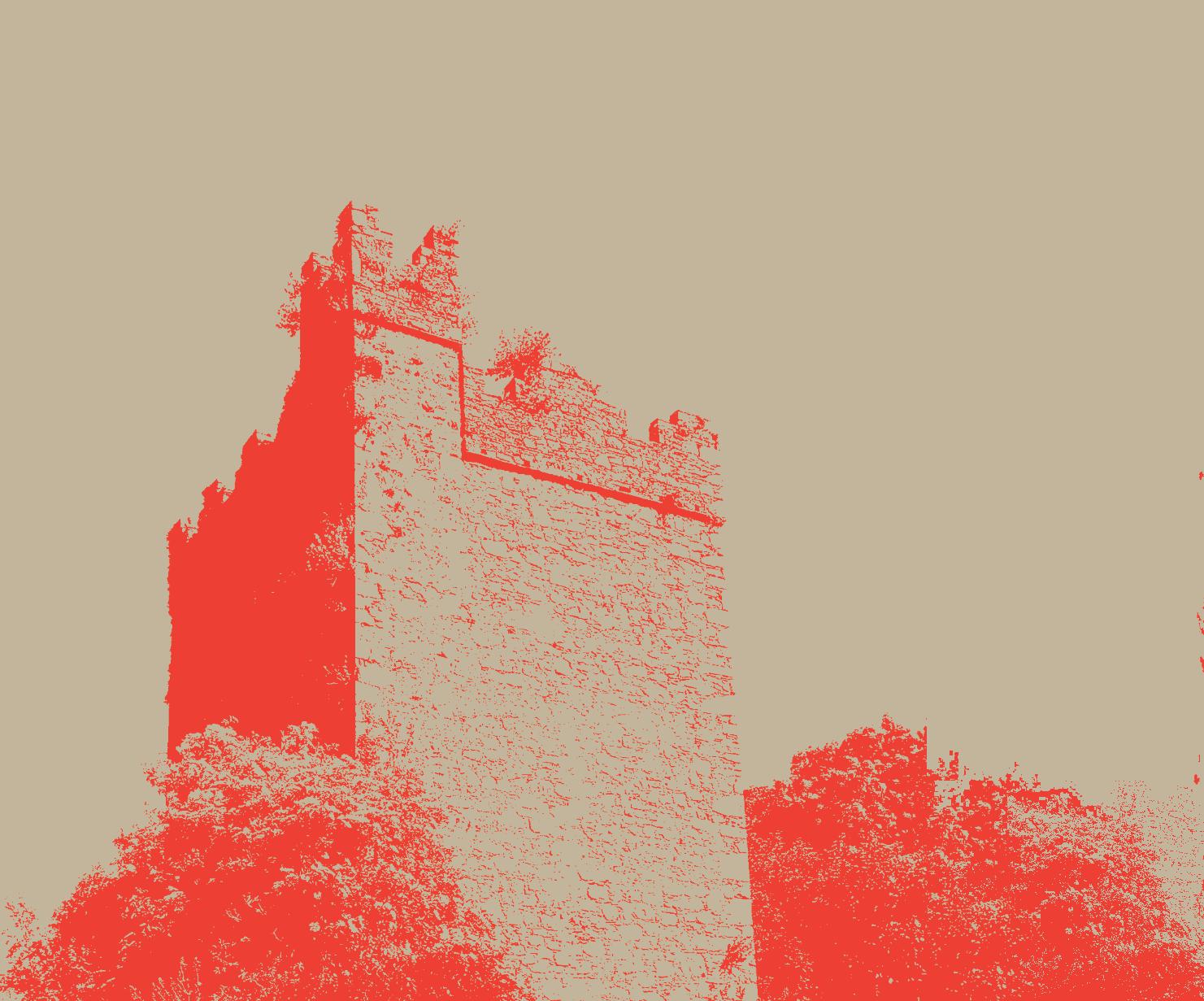
18
At the 18th century Downhill Castle in Co. Londonderry we helped the National Trust archaeologists with their excavations there. We did some digging in the coachyard, helped survey the stables and got a lift in their tractor!!
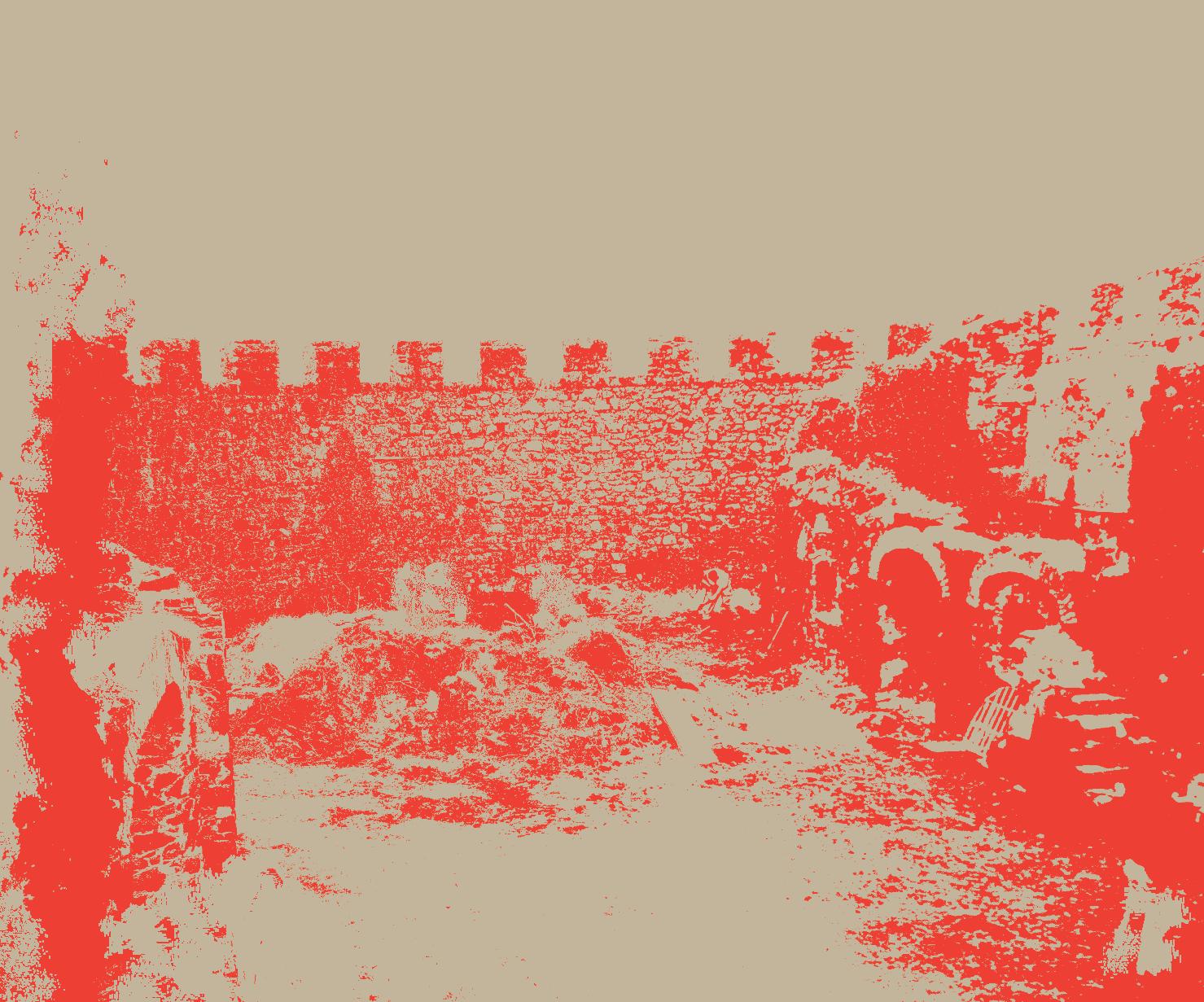

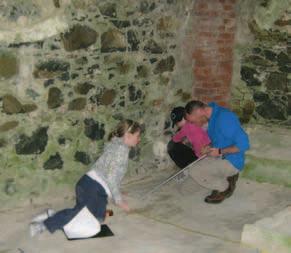

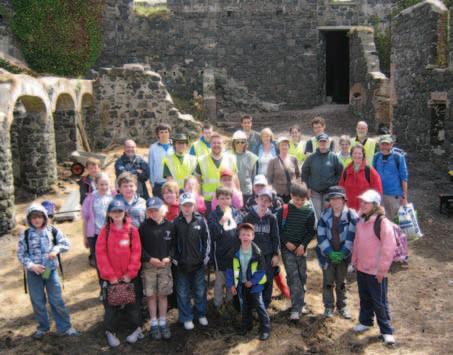


head of Marcus Aurelius
DID YOU KNOW?
Frederick Augustus Hervey, Earl of Bristol and Protestant Bishop of Derry, who built the Castle in the 1780s, visited Italy and excavated in Rome, bringing back various objects. One was a Roman carved head of Marcus Aurelius, Emperor of Rome from 161 to 180 AD, which the archaeologists rediscovered during their dig. The Earl-Bishop also built Mussenden Temple as his library, which was based on the Temple of Vesta at Tivoli outside Rome.
19
The Strangford Millennium Stone, Delamont Country Park, Co. Down
In June 1999 over 1000 people, mainly young people, came together to erect a new megalithic monument made of Mourne granite to celebrate the Millennium. It weighs 47 tonnes and is 10m high!
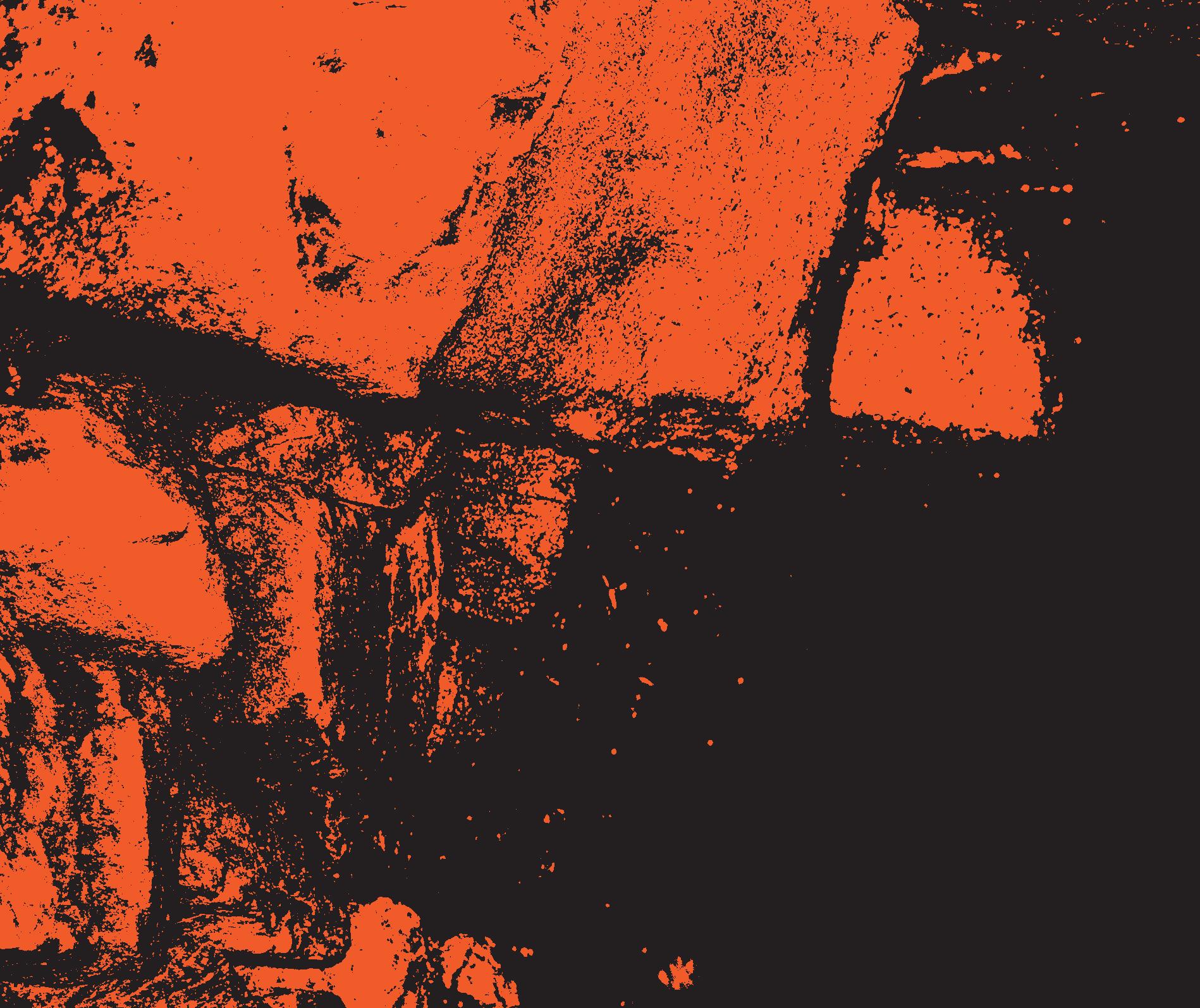
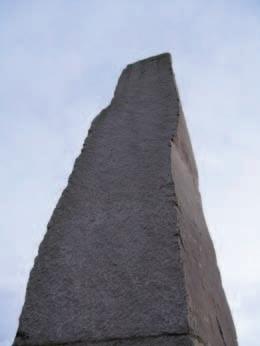
castle espie, Co. Down
We went to Castle Espie with the North Down Little Diggers group to see a replica prehistoric house made from pine, hazel, oak and ash with a reed thatched roof. The walls were insulated with hemp, straw and bracken and were covered in clay and hemp fibres.
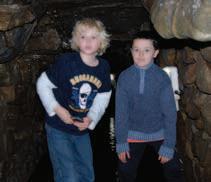
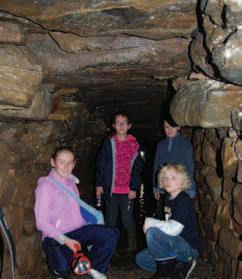
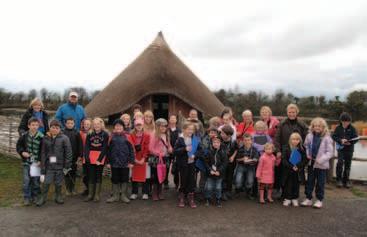
Binder,s Cove Souterrain, Finnis, C
o.
Down
We went into an underground passage and chamber used for storage and for people to hide in that was over 1000 years old, called a souterrain. It was really dark and wet but really cool!
20
Especially the PEACE III Programme managed by the Special EU Programmes Body and delivered by the North Down, Ards and Down Council cluster. Funding for the project was secured by Linda McKenna, Community Education Manager at Down County Museum, and the project was supervised by Mike King, Museum Curator, and Danielle Smyth, PEACE III Co-ordinator at Down County Museum.
We could not have carried out the project without the help of all the members of the Downpatrick Branch of the Young Archaeologists’ Club (YAC), and their parents; Mike King, Branch Leader of the Downpatrick YAC Branch, Sam Moore, archaeologist, who led the trips and compiled the booklet; Ian Meighan, geologist for helping us discover ‘geoarchaeology’; Paul Logue, Brian Williams and Edith Logue, NIEA for helping us visit digs and sites; and Malachy Conway, National Trust archaeologist for helping us to visit Downhill. Thanks also go to the Friends of Down County Museum Archaeology Club; the Somme Heritage Centre; Cormac McSparron and his crew at the Tirnony Portal Tomb dig (Centre for Archaeological Fieldwork); David and Michael Good at Myra Castle; Shirley Lennon and the staff of Castle Ward (National Trust); Castle Espie staff (World Wildfowl Trust) for letting us see their amazing roundhouse; Graham Furey for ploughing a field and allowing us to go fieldwalking at Ballynoe. Also the Young Archaeologists’ Club (YAC), run by the Council for British Archaeology in York, and YAC assistants and helpers Brian Leathem, Jim Parish, Moira O’Rourke, Anne Kelly, Mary Denvir, Elizabeth Grebell and Francesca Braniff, and Down Community Transport for getting us everywhere we needed to go. Finally a big thank you to Wojciech Brzezinski of the National Archaeological Museum in Warsaw for inspiring our Polish links, and Ola Zorawska for translating the text into Polish.
Text: Members of Downpatrick Branch of the Young Archaeologists’ Club (YAC), edited by Sam Moore, with contributions from Ian Meighan and Mike King. Photography: Young Archaeologists, Mike King, Sam Moore and NIEA. Drawings: Young Archaeologists
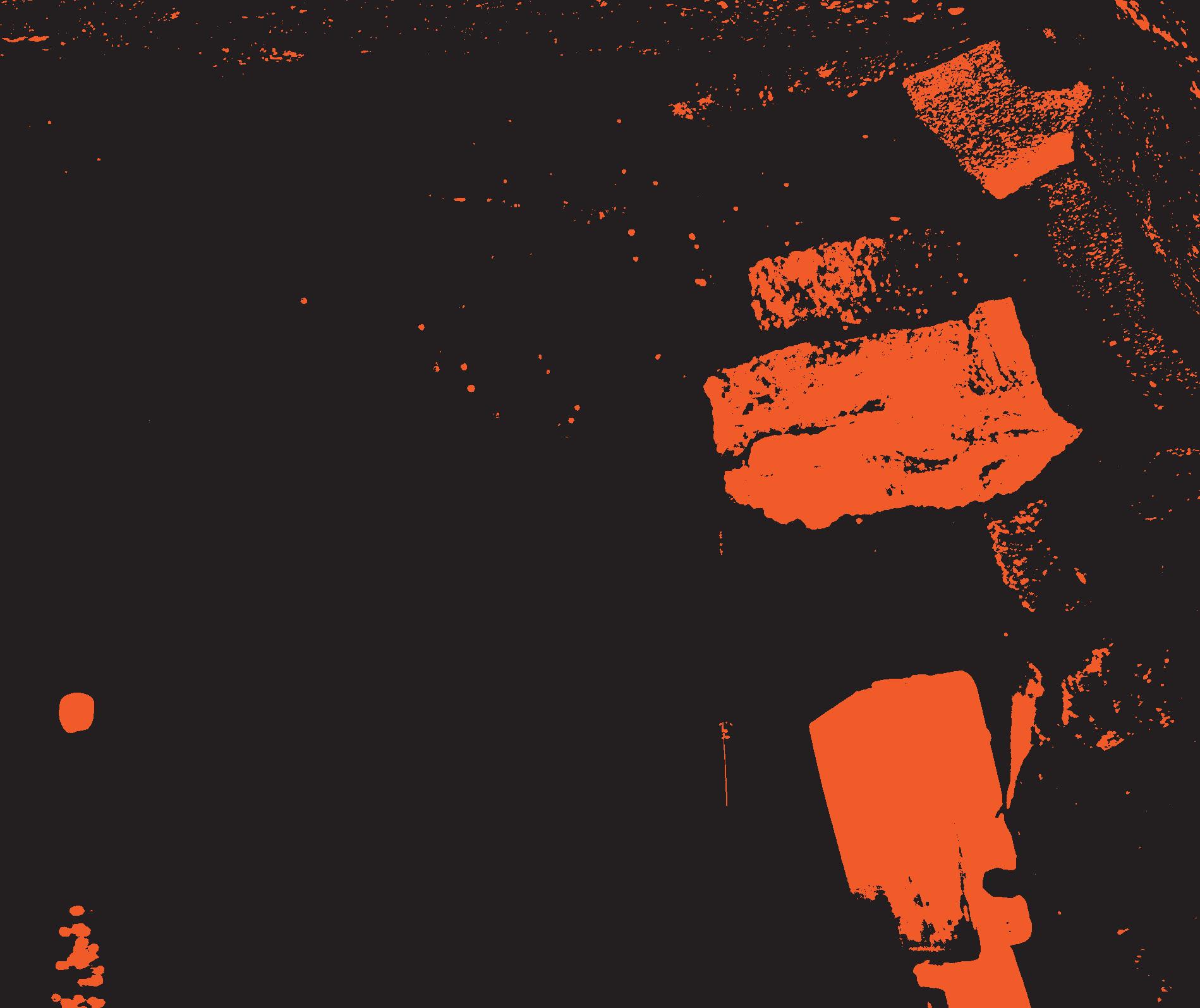
We want to thank everyone who helped us during the year!
The Strangford Stone in Delamont Country Park, Co. Down: a modern day megalith.


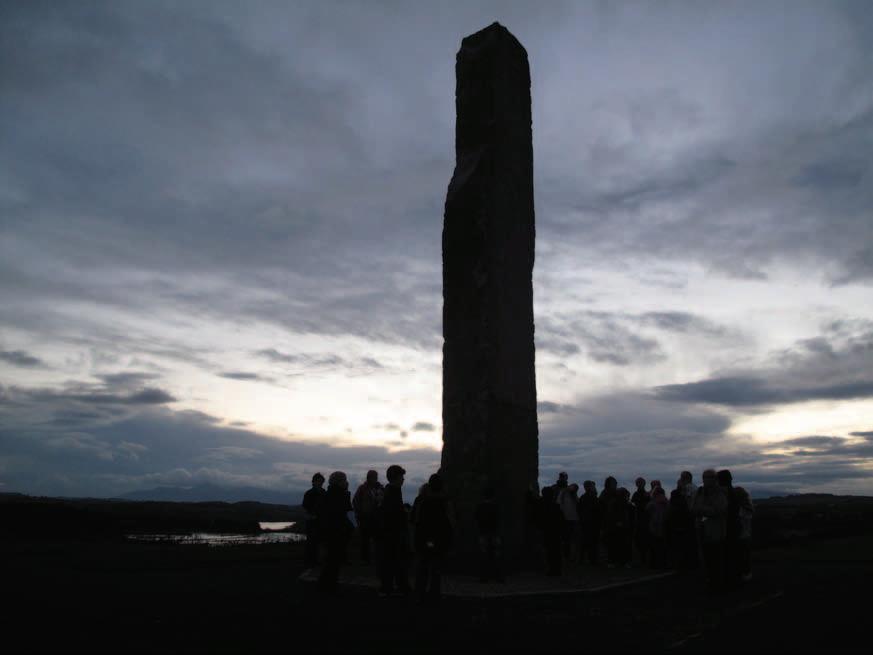




 This booklet is part-financed by the European Union’s European Regional Development Fund through the EU Programme for Peace & Reconciliation (PEACE III) managed by the Special EU Programmes Body and delivered by the North Down, Ards and Down Council cluster.
This booklet is part-financed by the European Union’s European Regional Development Fund through the EU Programme for Peace & Reconciliation (PEACE III) managed by the Special EU Programmes Body and delivered by the North Down, Ards and Down Council cluster.






























































































 Ballynoe, Co. Down
Ballynoe, Co. Down
































